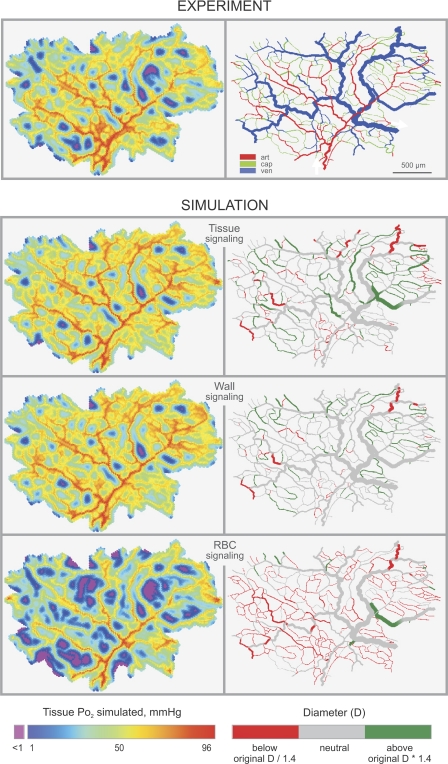Fig. 7.
Predicted tissue oxygen levels (left) and vessel diameters (right) in a mesenteric microvascular network. Experiment, results with measured diameters; vessels color-coded for segment type derived from adjacent bifurcations (diverging, converging). art, Arteriole; cap, capillary; ven, venule. White arrows indicate flow direction in the feeding arteriole and the draining venule. Simulation, results for three assumed signaling modes. Vessels are color-coded for deviation of predicted from measured diameters. Tissue signaling gives good tissue oxygenation, but some distal arterioles are unrealistically large, and some venules are too small. Wall signaling gives good tissue oxygenation and no systematic diameter deviations. RBC signaling results in large undersupplied tissue regions and shrinking of small vessels.

